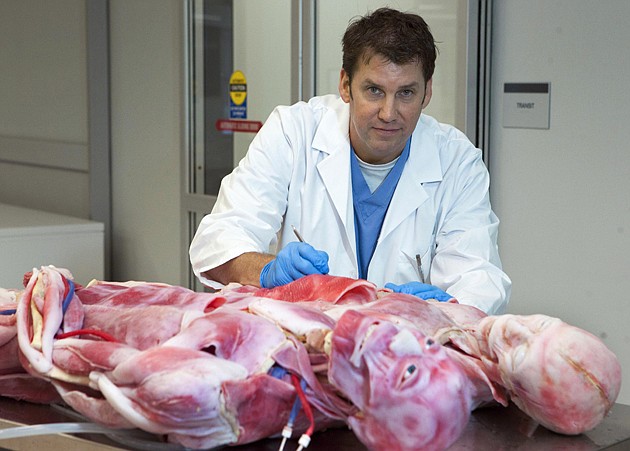- November 25, 2024
-
-
Loading

Loading

When venture capitalists ring up SynDaver Labs these days, Christopher Sakezles doesn't call back.
“I don't need them any more,” says Sakezles, founder of the firm that creates synthetic lifelike bodies that breathe, say words and bleed.
When he did need venture funding, doors were slammed in his face. For several years after founding the firm in 2005, Sakezles looked most anywhere he could for capital.
“We were told there was no market for what we're doing,” Sakezles says. “Animals are cheap.”
To fund the company, he spent all his savings, ran up his personal credit cards and borrowed from friends and relatives.
He proved the naysayers wrong.
“Every major medical manufacturer in the world uses our products,” he says.
In the last six years, the company has grown from 15 employees to almost 100. Last month, the business more than tripled the size of its facility with a move into a 25,000-square-foot building on Tampa's Benjamin Road.
“We are purely funded by cash flow,” he says.
SynDaver's customers include medical device manufacturers, colleges and the military.
Sakezles, who has a mechanical engineering degree from the University of South Florida, a master's in material science plus a Ph.D. in polymer science from the University of Florida, says he was surprised the military became one of the company's biggest customers.
The military uses the synthetic bodies for medical training and research. It also uses them for ballistic applications (as in shooting targets) and research into crowd control. Other than shooting to kill, existing crowd-control methods include tear gas, rubber bullets and water cannons.
Military researchers use the fake humans to test ways to assault the human senses, including hearing, touch and light.
At universities, synthetic humans are used to train medical students and for research. Locally, SynDaver bodies are used for mock operations at the University of South Florida's Center for Advanced Medical Learning and Simulation.
Finding customers is easy for SynDaver, but finding employees is a challenge. Sakezles looks for smart people good with their hands. Many of the company's employees are engineers, from software to mechanical. Biomedical science majors also work there.
“They have to start out in production,” he says. “You can't design effectively if you don't know how things are put together. In six to nine months, they know more about the body than a surgeon.”
SynDaver revenue, in the $5 million to $10 million range, is expected to double this year, he says, declining to be more specific.
And earlier this year, the company expanded outside of Florida. It opened an office in Portland, Ore., and it partnered with the University of Arizona to open a Phoenix office, which is still hiring employees.
Next up for expansion is Minneapolis, Boston and the Midwest.
“We are the world's leader in live tissue replacement,” he says. “There's no one that's even close.”
SynDaver recently partnered with Tellyes Scientific, a Chinese company, that is reselling SynDaver's products internationally. Sakezles also has a partnership with one of the world's largest simulation manufacturers to develop next-generation products, he says.
Using that company's computer technology, SynDaver plans to make bodies that are even more lifelike than now.
“The model keeps getting more and more complex. We keep adding more features,” he says. “Until we get to the point where it can get up walk away, I don't think we're going to be finished.”
Companies already make robots that walk on two legs, he says, adding, “Monsters in terminator movies will ultimately be here, and they're not that far off.”
But don't look for SynDaver to make them.
“I'm interested in savings lives, not taking them,” Sakezles says.